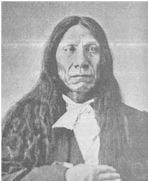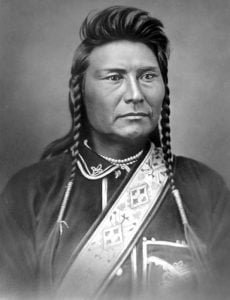Blackfoot Tribe
Sihasapa (‘black feet’, so called because they wore black moccasins). A small division of the Teton Sioux. The name, like the names of some other Teton tribes, does not appear to have come into notice until a recent date, no mention being made of it by Lewis and Clark, Long, or earlier authorities. Catlin in his Letters and Notes, written during his stay among the northwestern Indians (1832-39), mentions the Blackfoot Sioux. In a note to De Smet’s Letters they were estimated to number 1,500. Culbertson estimated the tribe at 450 lodges, an exaggeration, and mentions five bands or subtribes, … Read more






